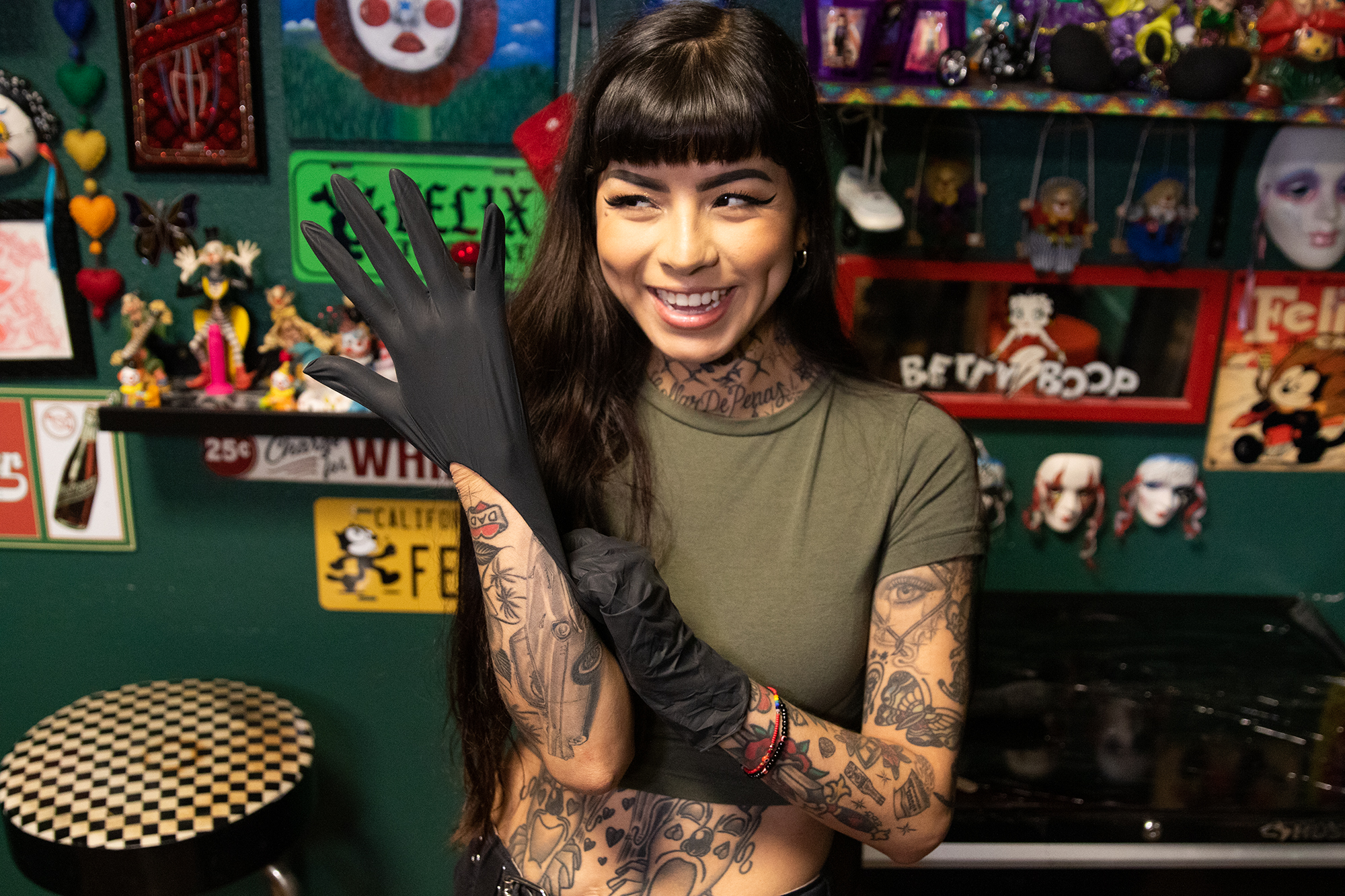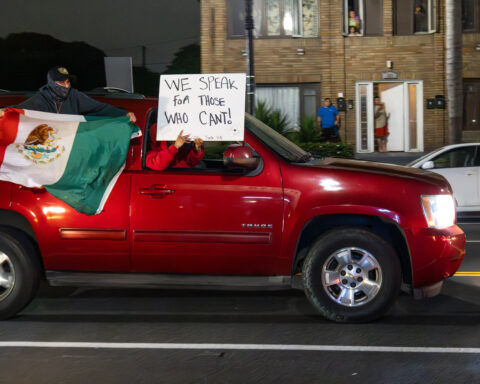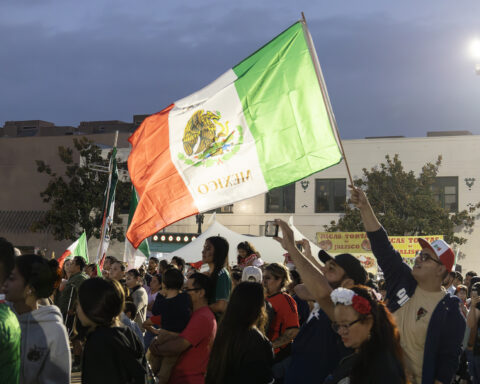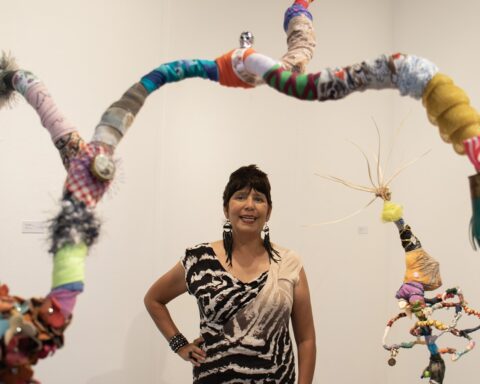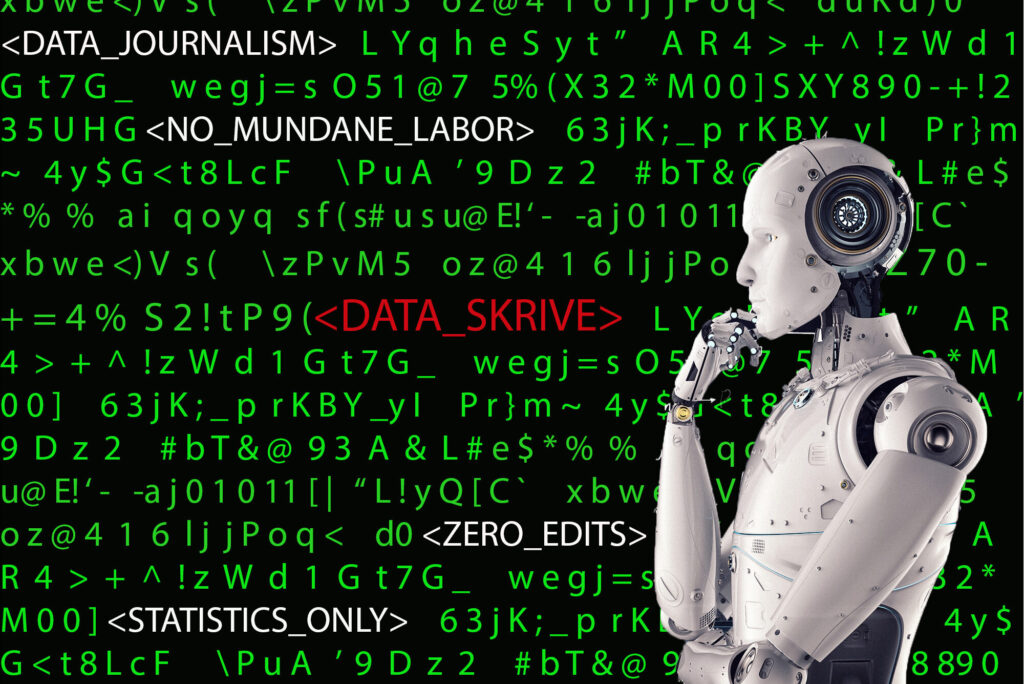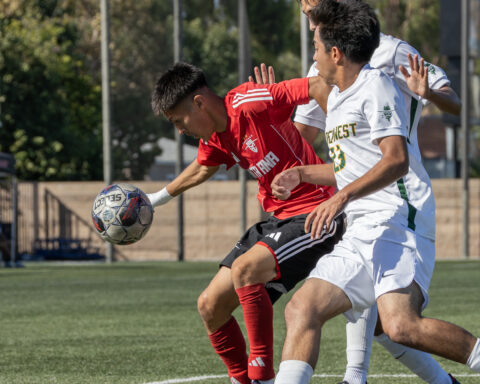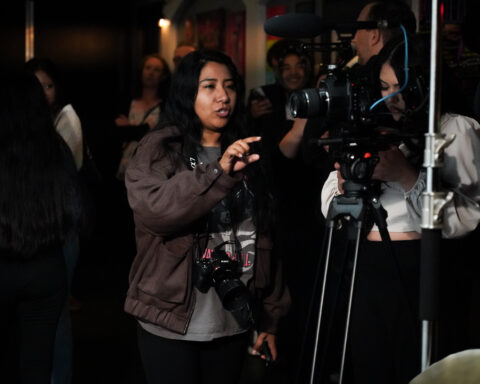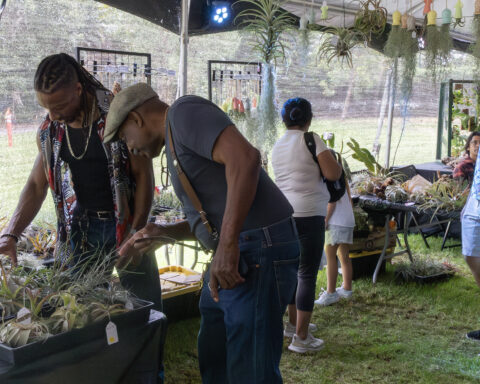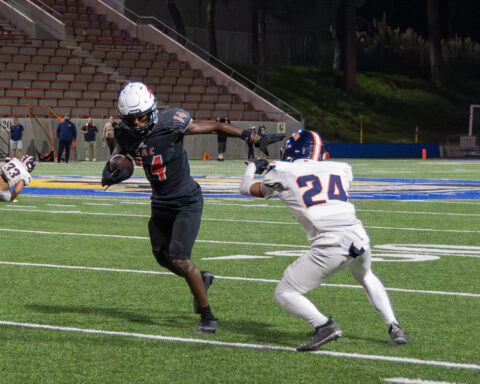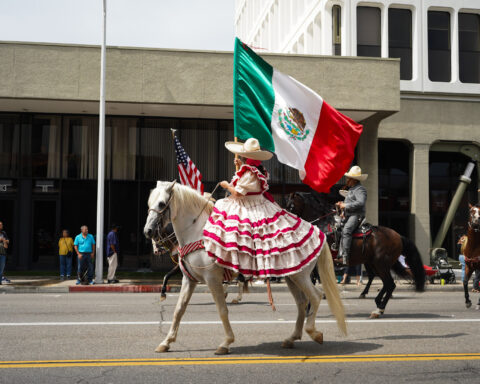In a green-walled studio in downtown Santa Ana, two women laugh as a tattoo gun buzzes. Destiny Felix works on an elbow piece filler for her friend and fellow female tattoo artist, who goes by Bliss. They joke about how annoying it is to get DMs about their looks instead of bookings.
About 1 in 4 tattoo artists in the U.S. today are women. In tattoo-loving Santa Ana – which is home to more than two dozen public shops – Felix and Bliss say their experiences in the workplace helped them form bonds with other women and open their own private studios instead of continuing to work in male-dominated spaces.
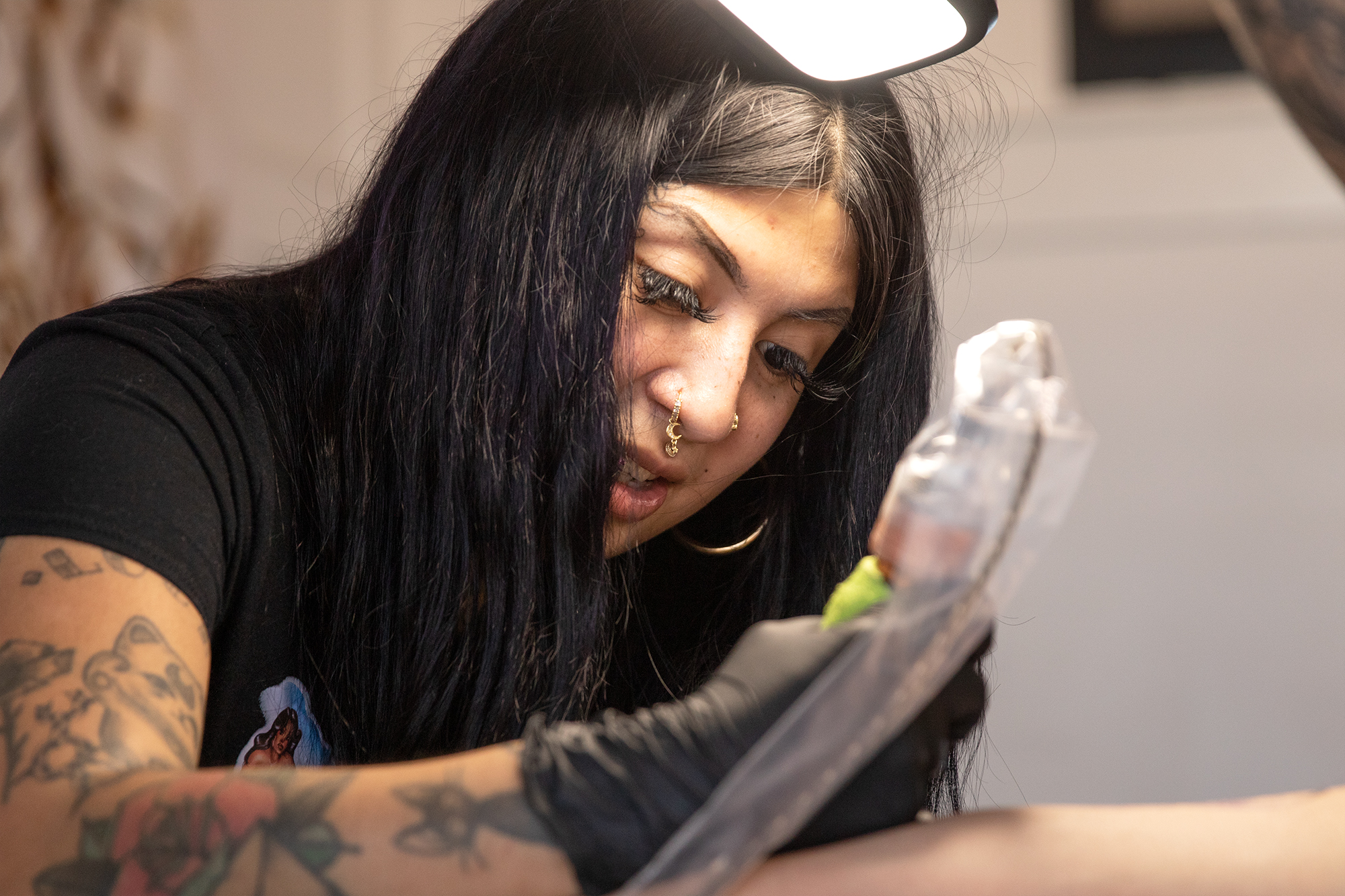
Felix and Bliss met while working at an Anaheim tattoo shop and had different motivations to work independently in a private studio.
Although the number of women in the tattoo industry has increased, Felix says she still experienced harassment and unfair treatment.
“I’ve seen a lot of women try to be an apprentice and the way they treat you, as if you’re a slave,” says Felix.“They try to control you and no one is going to want to go through it, it’s a lot of sacrifice.”
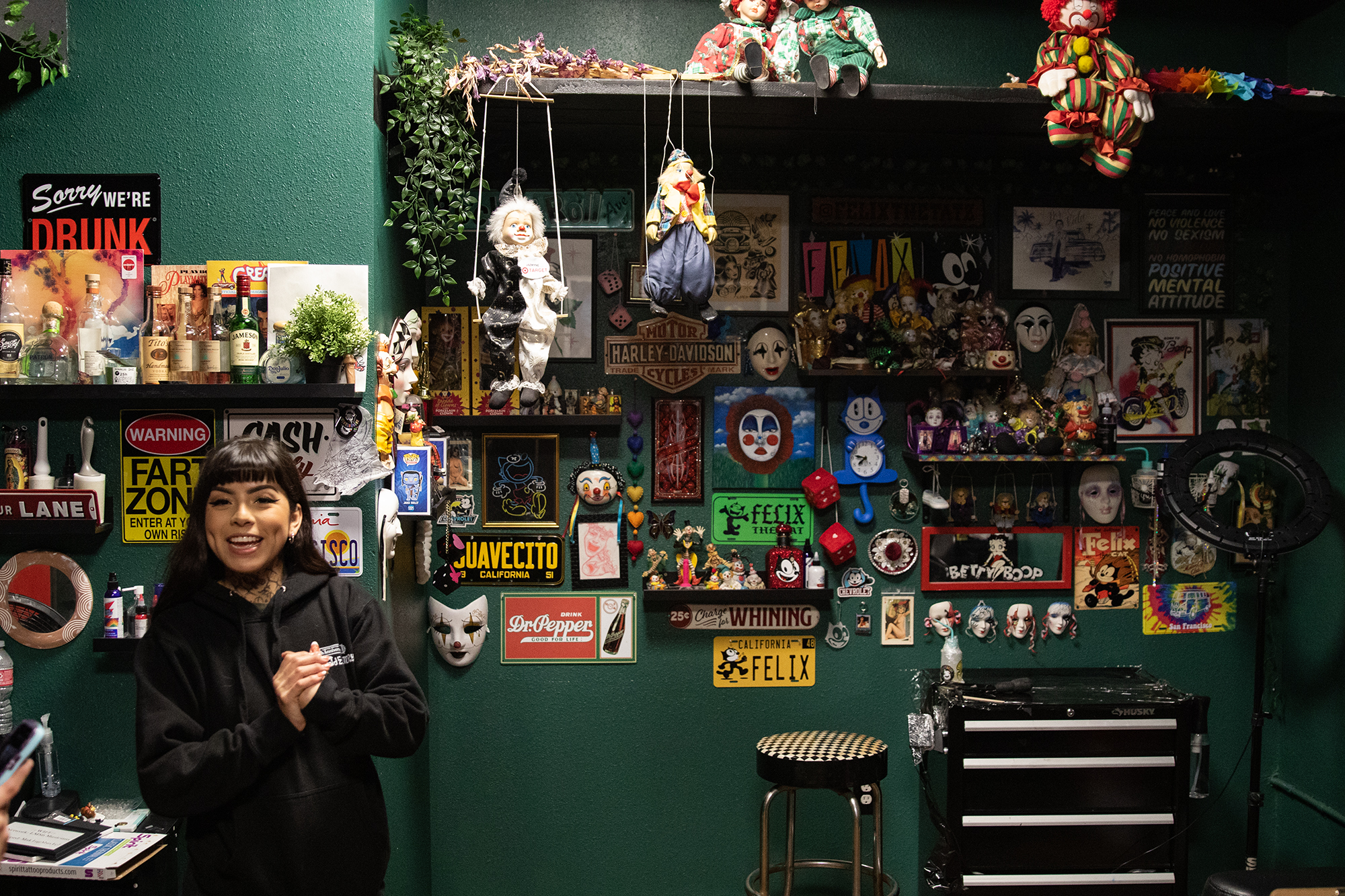
Felix was born and raised in Santa Ana and started tattooing after she developed Acute Disseminated Encephalomyelitis, a neurological condition that causes swelling in the brain and spinal cord. After waking from a coma that left her temporarily impaired, activities and exercises at the rehabilitation center brought her joy.
Felix worked for several tattoo shops, but it wasn’t until the last one that she noticed the disparities between genders being the only female to work at a shop of men in over a year. The shop would close her appointments, charge more on rent and demand she take down decorations on her station because it made other artists “look boring.” It took such a toll on her mental health that she stared therapy and searched for private studios.
“I felt like nobody understood me,” she says.
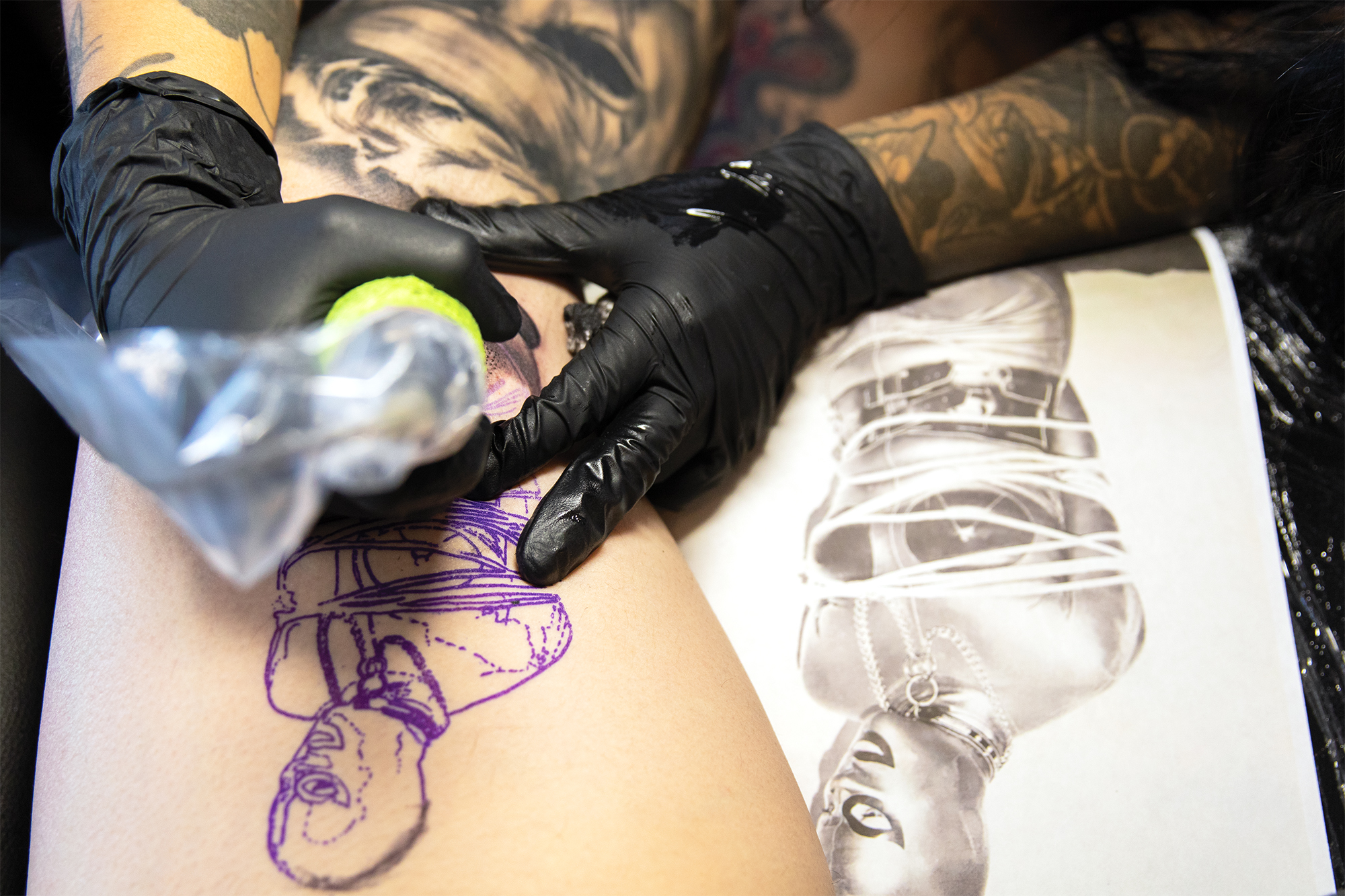
Bliss is an only child born into a religious and strict family. She was always fascinated by art and would get in trouble at school for drawing rather than listening to teachers. She rebelled by doing stick-and-poke tattoos on herself at 14 years old, using a sewing needle to stick ink into skin.
Now, with her own private studio she shares with another female tattoo artist, she’s working to find clients and overcome imposter syndrome.
“This is supposed to be something manly, but I love that we [women] are breaking the norm,” Bliss says.
- Women tattoo artists foster community through work connections - May 22, 2023
- I needed help transferring. If only there were more counselors… - March 22, 2023
- Two spots to grab food on campus - February 27, 2023


